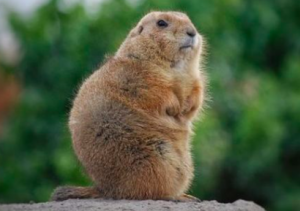As the calendar flips to February 2, the quirky tradition of Groundhog Day takes center stage in the United States. Rooted in ancient European customs, particularly Candlemas, this annual event involves a groundhog emerging from hibernation to predict the duration of winter. Groundhog Day’s origins trace back to the belief that sunny weather on Candlemas Day foretells six more weeks of winter.
Also read | Groundhog Day meaning, traditions and history
The most famous Groundhog Day celebration unfolds in Punxsutawney, Pennsylvania. The iconic Punxsutawney Phil, a groundhog with a storied history dating back to the late 1800s, “predicts” the weather. If he sees his shadow due to clear weather, it means six more weeks of winter; if not, an early spring is anticipated.
Groundhog Day’s significance extends beyond weather folklore. Positioned halfway between the spring equinox and winter solstice, it marks a moment of seasonal transition. Beyond meteorological predictions, Groundhog Day fosters community spirit, notably in Punxsutawney, where festivities include talent shows and banquets.
While not a federal holiday, Groundhog Day draws attention across the nation. The anticipation builds at Gobbler’s Knob in Punxsutawney, where festivities commence at 3 am. The Punxsutawney Groundhog Club orchestrates the celebration, offering a blend of tradition and merriment.
In the American custom, Punxsutawney Phil plays a crucial role in forecasting the upcoming season. His sighting of a shadow forecasts six more weeks of winter, while a shadow-free outlook suggests an early spring. The inaugural Groundhog Day celebration was officially established on February 2, 1887.
As Groundhog Day 2024 arrives, Americans engage in the playful anticipation of Phil’s prediction. While the tradition may not hold scientific accuracy, its enduring charm and the festive atmosphere at Gobbler’s Knob continue to captivate communities and spectators alike.
Also read | Groundhog Day prediction: Did Phil see his shadow and what does it mean?
In essence, Groundhog Day is more than a whimsical weather prediction—it’s a cultural phenomenon that unites communities in a lighthearted celebration of seasonal changes and shared traditions.



